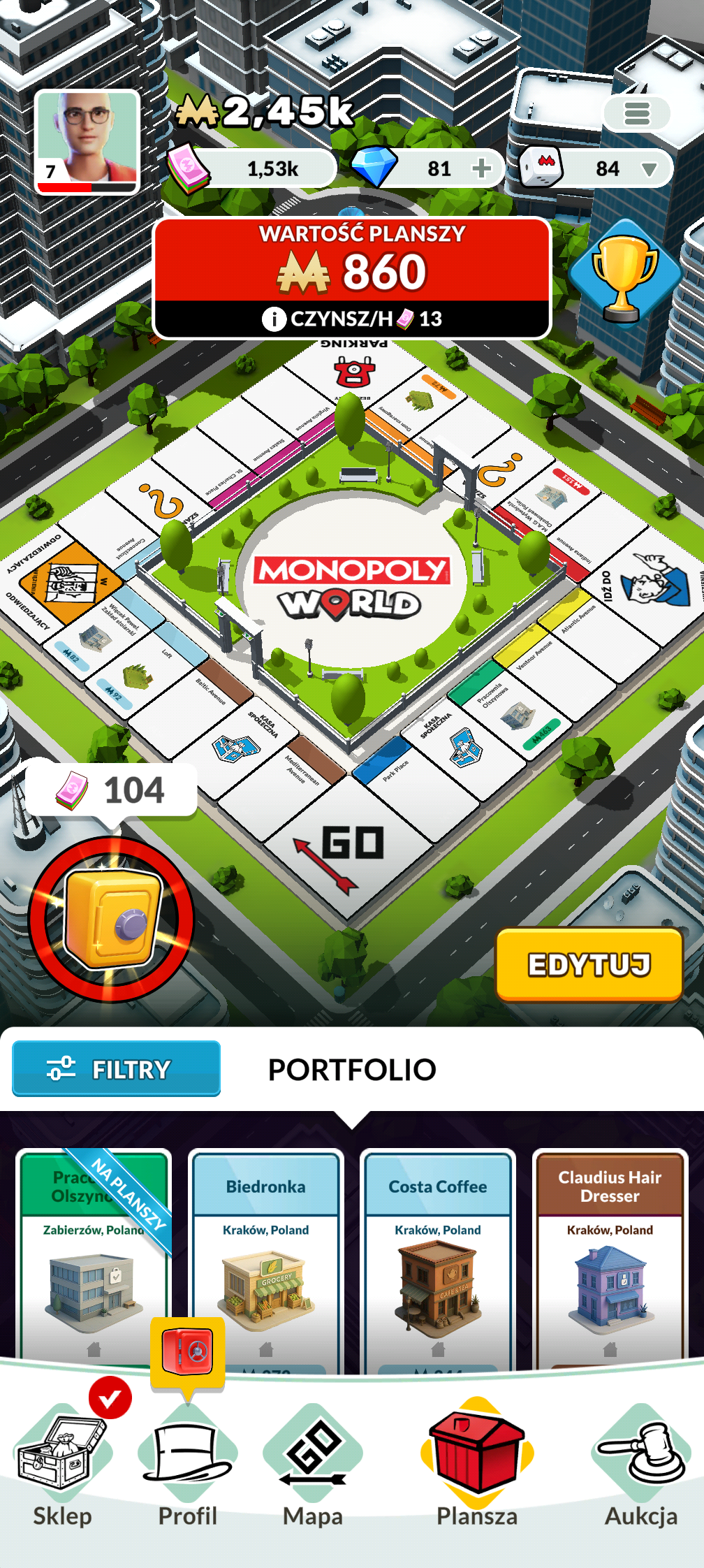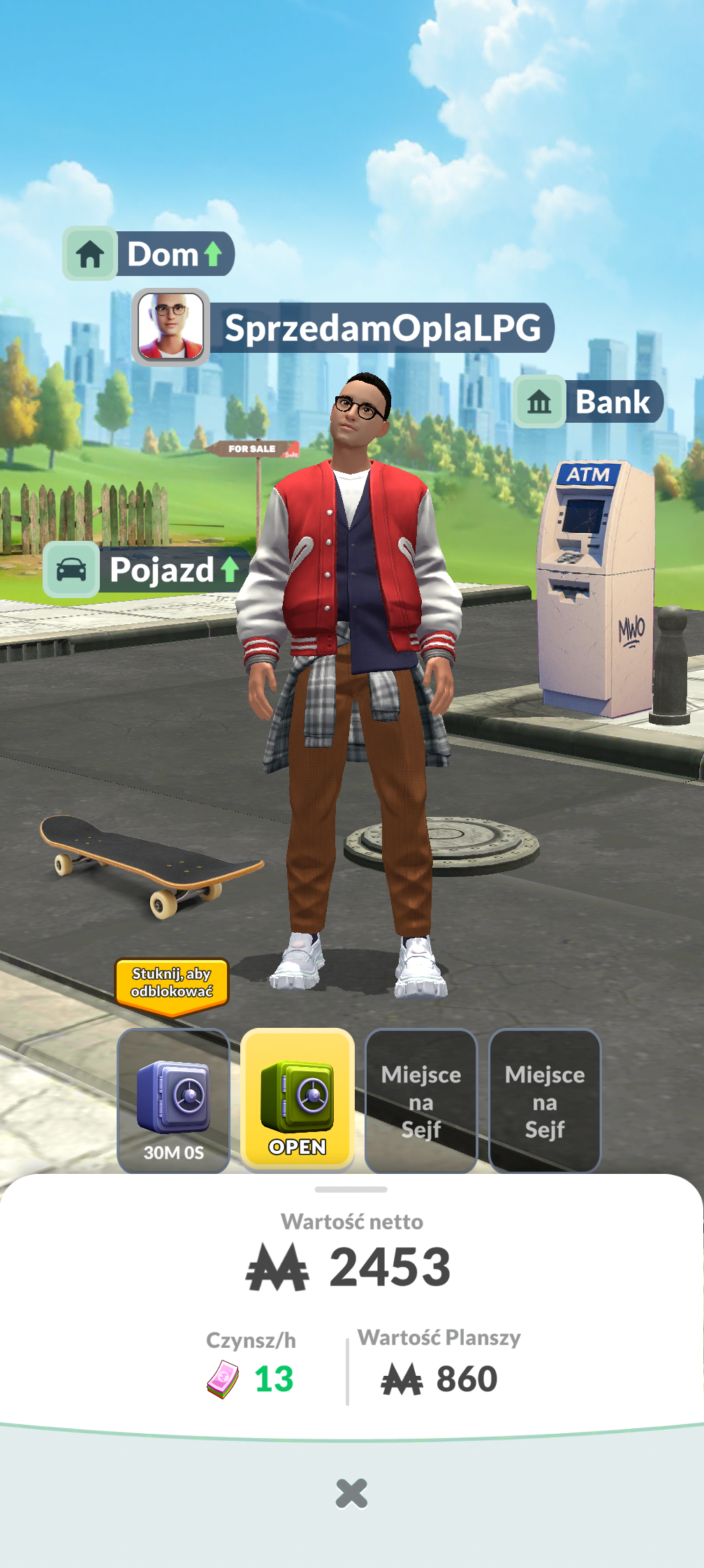Project Overview
Monopoly World – is an incredibly exciting and innovative free-to-play game that blends geolocation, fitness elements and augmented reality technology to bring the classic board game to life. Discover real-life buildings, countries, cities and special venues as you explore your neighborhood and add them to your ever-growing empire. Challenge your friends and other players from around the world or go head to head in special venues. Use your properties as leverage to trade with other players and compete to increase your empire. With over 100 million real-life locations to explore, Monopoly World is the perfect game for people who love the thrill of the competition and the joy of exploration. As the UX Designer, I contributed to creating an engaging, user-friendly experience that motivates players to move, compete, and connect with friends worldwide.Role: Senior UX Designer/Researcher
Design team: UX Designer, UI Designer, Game Designer
Tools: Figma, Miro, Slack, Jira
Challenge
- Integrate geolocation to promote physical activity and social competition.
- Design an intuitive interface that encourages regular player engagement.
- Foster a sense of competition through group-based challenges and rewards.
- Educate players on new mechanics without overwhelming them.
My Role
- Conducted user research focusing on player motivations and behaviors.
- Designed wireframes and prototypes to incorporate movement and competition features.
- Ensured seamless integration of location-based and fitness tracking functionalities.
- Developed onboarding workflows to introduce new features clearly.
- Collaborated closely with developers to realize the design vision and ensure technical feasibility.
- Used player feedback to continuously refine the user experience.
Design Process
- User Research & Insights Conducted surveys and interviews revealing players’ desire for social connectivity, competitive play, and promoting physical activity, leading to ideas for movement-based challenges.
- Concept Development Brainstormed ways to motivate movement—such as daily step goals—and how to gamify this through rewards and leaderboards.
- Wireframes & Prototypes Created visual flows showing how players can track steps, join group challenges, and see their standings relative to friends and other players.
- Usability Testing & Iteration Tested prototypes with target users, refining how movement and competition are presented to ensure clarity and motivation.
Key Features & Design Solutions
- Movement Tracking & Rewards: Players earn in-game rewards by reaching daily step goals, encouraging physical activity.
- Group Challenges & Leaderboards: Facilitated friendly competition within groups, promoting social engagement and motivation to move more.
- Clear Daily Goals & Progress Indicators: Designed visual cues to motivate players and show progress towards their movement targets.
- Social Integration: Allowed players to challenge friends, compare performance, and celebrate achievements, fostering a healthy competitive environment.
- Educational Onboarding: Developed tutorials and prompts to educate players on how movement impacts gameplay and rewards.



Outcomes & Impact
- Significantly increased daily active users due to engaging movement and competition features.
- Enhanced player retention and social interaction by fostering community and friendly rivalry.
- Received positive feedback on the motivational design elements, which helped players stay active and invested.
- Successfully blended fitness, social, and gaming elements into an intuitive user experience.
Reflection
Adding movement and competitive elements required a thoughtful approach to user motivation and interface clarity. This project demonstrated the power of combining physical activity with gaming, and reaffirmed the importance of user-centered design in creating compelling, health-promoting experiences.





